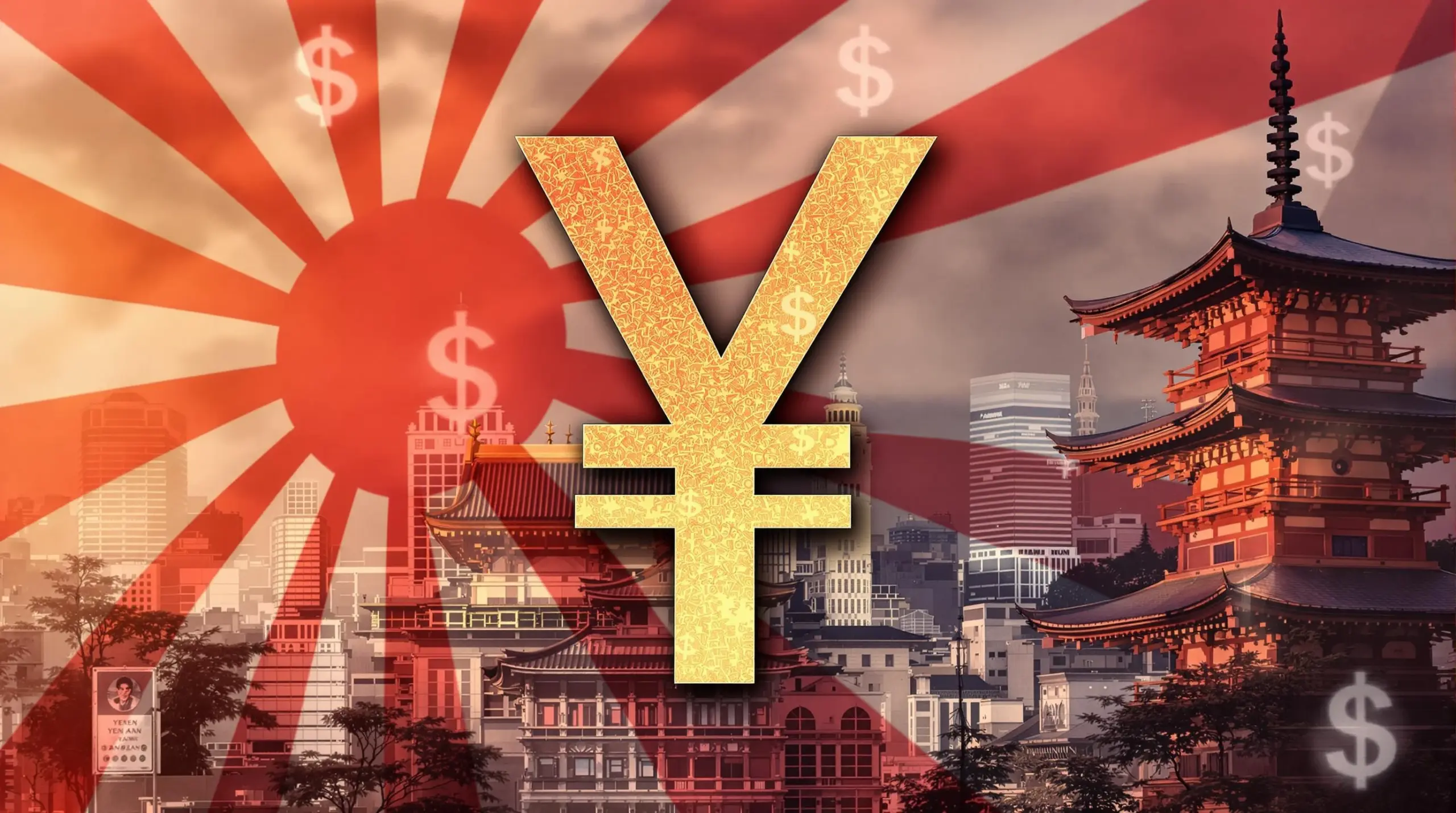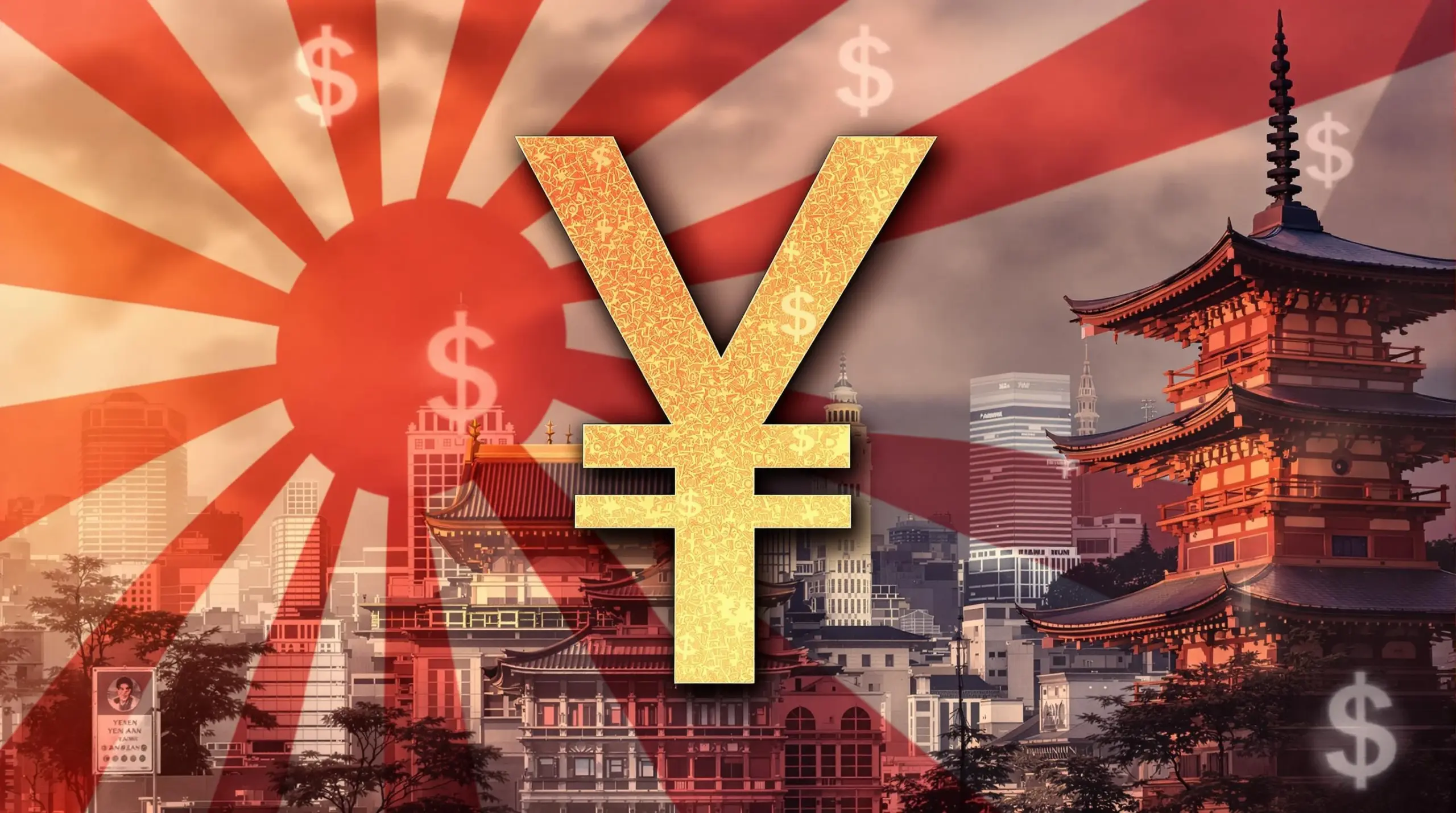BitcoinWorld

USD/JPY Outlook: Unveiling Critical Japan Election Scenarios for Traders
The world of global finance is constantly buzzing with political shifts and economic indicators, and few events hold as much sway over currency markets as national elections. For traders and investors keenly observing the dynamic interplay between major currencies, the Japanese election stands as a pivotal moment. The USD/JPY outlook, in particular, is subject to significant shifts based on the political landscape unfolding in Tokyo. Bank of America (BofA) has provided insightful analysis into various Japan election scenarios, offering a roadmap for how the currency pair might react. This article will dive deep into these projections, helping you understand the potential volatility and strategic opportunities that lie ahead.
Understanding the Current USD/JPY Outlook: What’s Driving the Pair?
Before we delve into future scenarios, it’s crucial to grasp the foundational elements influencing the USD/JPY outlook today. The Japanese Yen (JPY) has long been a subject of fascination for currency traders, often acting as a safe-haven asset during times of global uncertainty. However, its recent performance has been largely dictated by the significant divergence in monetary policy between the Bank of Japan (BoJ) and other major central banks, particularly the U.S. Federal Reserve.
For years, the Bank of Japan maintained an ultra-loose monetary policy, characterized by negative interest rates and yield curve control (YCC), aiming to combat deflation and stimulate economic growth. In stark contrast, the Federal Reserve embarked on an aggressive rate-hiking cycle to tame surging inflation. This interest rate differential has made holding U.S. Dollar assets significantly more attractive than Yen-denominated ones, leading to a prolonged period of Yen depreciation against the Dollar.
- Interest Rate Differentials: The primary driver of USD/JPY strength has been the wide gap between U.S. and Japanese bond yields. Higher U.S. rates attract capital, strengthening the Dollar.
- Bank of Japan’s Stance: The BoJ’s commitment to maintaining accommodative policy, even as inflation showed signs of picking up, signaled to markets that the Yen would remain under pressure.
- Global Risk Appetite: While the Yen is traditionally a safe haven, periods of strong global risk appetite can also see investors moving out of the Yen into higher-yielding assets.
- Trade Balances and Energy Prices: Japan’s reliance on energy imports means higher oil prices can negatively impact its trade balance, putting further pressure on the Yen.
Understanding these underlying currents is essential for interpreting how election outcomes could either reinforce or dramatically alter the existing trajectory of the USD/JPY pair.
Navigating Japan Election Scenarios: BofA’s Expert Analysis
The upcoming Japanese election is not just a domestic political event; it’s a significant determinant for the global financial landscape. BofA’s analysis meticulously breaks down various Japan election scenarios, each carrying distinct implications for economic policy and, by extension, the Yen. The core of their assessment revolves around the potential for shifts in government stability, policy priorities, and ultimately, the Bank of Japan’s autonomy and direction.
Japan’s political system, predominantly led by the Liberal Democratic Party (LDP) for much of the post-war era, typically offers a degree of stability. However, even within the LDP, different factions and potential coalition dynamics can lead to varying policy outcomes. BofA identifies key scenarios:
- Strong LDP Majority/Stable Coalition: This scenario implies continuity. A government with a robust mandate is less likely to deviate sharply from current economic policies, including the gradual approach to monetary policy normalization. This provides a predictable environment, though it might not alleviate Yen weakness significantly in the short term.
- Weakened LDP Majority/Fragmented Coalition: If the LDP loses significant ground, forcing them into a more complex or unstable coalition, policy uncertainty could rise. This might delay crucial economic reforms or create friction regarding fiscal and monetary coordination. Markets typically react to uncertainty with caution, potentially leading to increased Yen volatility.
- Opposition Victory/Significant Shift: While less probable given Japan’s political history, a significant upset leading to an opposition-led government could trigger a more dramatic reassessment of economic priorities. This might include calls for more aggressive fiscal stimulus, or even pressure on the BoJ to alter its stance more rapidly. Such a scenario could lead to immediate, sharp reactions in the Yen.
BofA’s framework emphasizes that the market’s reaction will not just be to who wins, but to the perceived stability and policy direction of the new government. The clearer the mandate for continuity or change, the more defined the market’s response is likely to be.
Decoding Bank of Japan Strategy: Policy Implications Post-Election
Perhaps the most critical link between the Japanese election and the Yen currency trends is the impact on the Bank of Japan strategy. The BoJ, while nominally independent, often operates within the broader economic policy framework set by the government. A new administration, especially one with a strong mandate for change, could subtly or overtly influence the BoJ’s approach to monetary policy, particularly regarding its long-standing yield curve control (YCC) program and negative interest rate policy (NIRP).
Here’s how different election outcomes might shape the Bank of Japan strategy:
| Election Scenario | Potential Government Stance | Likely Bank of Japan Strategy Impact | Implication for Yen |
|---|---|---|---|
| Strong LDP Majority | Continuity, gradual reforms | Gradual normalization of YCC, potential cautious rate hikes (if inflation persists). No immediate drastic shifts. | Slightly bullish, but long-term interest rate differentials will still weigh. Moderate appreciation over time. |
| Weakened LDP / Fragmented Coalition | Policy uncertainty, slower decision-making | BoJ might delay significant policy shifts awaiting clear government direction. Increased focus on economic stability. | Increased volatility, potentially range-bound. Market uncertainty could lead to temporary safe-haven flows. |
| Opposition Victory / Major Shift | Potential for aggressive fiscal stimulus, calls for faster policy change | Increased pressure on BoJ to align with new government’s growth agenda. Possible faster YCC abandonment, earlier rate hikes. | Strongly bullish, as market anticipates a quicker end to ultra-loose policy. Significant appreciation potential. |
It’s important to note that the BoJ has repeatedly emphasized its data-dependent approach. However, political shifts can alter the economic data landscape (e.g., through fiscal spending) and also influence the perceived urgency of policy adjustments. The market will be keenly watching for any signals from the new government regarding their preferred direction for economic policy, as this will heavily inform expectations for the Bank of Japan’s next moves.
Anticipating Yen Currency Trends: Potential Shifts and Volatility
The confluence of election outcomes and the subsequent Bank of Japan strategy will directly translate into distinct Yen currency trends. For traders, understanding these potential shifts is paramount for positioning and risk management. The Yen’s value against the U.S. Dollar (USD/JPY) will be the most direct reflection of these changes.
Let’s consider the potential scenarios for the Yen:
- Scenario 1: Continued Gradualism (Strong LDP Mandate)
If the election results in a stable government committed to the current path of gradual economic recovery and careful monetary policy normalization, the Yen’s appreciation against the Dollar might be slow and measured. Interest rate differentials would likely remain significant for some time, keeping the USD/JPY pair elevated, albeit with a potential ceiling as the market anticipates eventual BoJ tightening. We might see the USD/JPY consolidate or slowly drift lower from current highs, perhaps testing support levels around 145-148, but not a dramatic collapse. - Scenario 2: Increased Uncertainty (Fragmented Coalition)
A less decisive election outcome, leading to a fragmented or unstable government, could introduce a period of heightened volatility for the Yen. Policy paralysis or internal disagreements could delay crucial decisions, leading to market unease. In such a scenario, the Yen might exhibit choppy trading, reacting sharply to political headlines. Traders would need to brace for wider daily ranges and potential false breakouts. USD/JPY could swing between 140 and 155 depending on the news flow, without a clear directional bias. - Scenario 3: Accelerated Normalization (Opposition or Strong Reformist Mandate)
This is the scenario with the most potential for a dramatic shift in Yen currency trends. If a new government signals a strong intent to push for faster monetary policy normalization, or if the BoJ, under new leadership or pressure, decides to accelerate its exit from ultra-loose policy (e.g., by ending YCC sooner or hiking rates more aggressively), the Yen could experience significant and rapid appreciation. This could see the USD/JPY pair break key support levels, potentially targeting 135 or even lower in a relatively short period, as the carry trade unwinds and capital flows reverse.
Beyond these direct impacts, other factors like global economic growth, commodity prices, and geopolitical stability will continue to influence the Yen’s role as a safe-haven currency, adding layers of complexity to its trajectory.
Broader Global Forex Insights: Ripple Effects Beyond Japan
The implications of the Japanese election and subsequent shifts in Bank of Japan strategy extend far beyond the USD/JPY pair. The Yen is a major global currency, and significant changes in its value or the underlying economic policies of Japan can generate substantial global forex insights and ripple effects across international markets. Understanding these broader impacts is crucial for a holistic trading strategy.
Here’s how Japan’s political and economic shifts could influence the wider forex landscape:
- Impact on Carry Trades: The Yen has historically been a popular funding currency for carry trades due to its low interest rates. A significant shift towards monetary tightening by the BoJ would raise the cost of borrowing Yen, potentially unwinding these carry trades. This could lead to a strengthening of the Yen against a broader basket of currencies (e.g., AUD/JPY, NZD/JPY, GBP/JPY) and might put downward pressure on higher-yielding currencies.
- Influence on Asian Currencies: As a major economic power in Asia, Japan’s economic health and currency stability can affect its regional trading partners. A stronger Yen could make Japanese exports more expensive, potentially impacting trade balances across Asia. Conversely, a weaker Yen might give Japanese exporters a competitive edge.
- Global Liquidity Dynamics: The Bank of Japan’s extensive quantitative easing program has injected significant liquidity into global markets. Any substantial tapering or reversal of this policy could lead to a tightening of global liquidity conditions, affecting asset prices and capital flows worldwide. This could impact bond yields in other developed markets and potentially reduce appetite for riskier assets.
- Safe-Haven Status Reassessment: If the Yen were to strengthen significantly due to a shift in BoJ policy or improved economic fundamentals, its traditional safe-haven appeal could be reinforced. In times of global stress, investors might once again flock to the Yen, potentially diverting flows from other traditional safe havens like the U.S. Dollar or Swiss Franc.
- Commodity Market Sensitivity: Japan is a major importer of commodities. Shifts in the Yen’s value can impact the cost of these imports, affecting Japanese corporate profits and potentially influencing global commodity demand. A stronger Yen makes imports cheaper, while a weaker Yen makes them more expensive, potentially dampening demand.
For forex traders, these broader insights mean looking beyond just the USD/JPY pair. Opportunities or risks might emerge in cross-Yen pairs, commodity-linked currencies, and even emerging market currencies that have strong trade or financial ties with Japan.
Key Challenges and Actionable Insights for Traders
While BofA’s analysis provides a robust framework, navigating the actual market post-election will present its own set of challenges. Political outcomes are inherently unpredictable, and market reactions can sometimes be counter-intuitive in the short term. Here are some key challenges and actionable insights:
Challenges:
- Uncertainty of Mandate: Even with an election outcome, the clarity of the new government’s mandate and its specific policy priorities might take time to emerge.
- BoJ Independence vs. Government Pressure: The degree to which the Bank of Japan maintains its independence from political influence will be a constant point of contention and market speculation.
- Global Economic Headwinds: External factors, such as global recession fears, inflation trends in other major economies, or geopolitical events, can overshadow domestic Japanese developments.
- Market Overreaction/Underreaction: Initial market reactions can be exaggerated or subdued, requiring careful observation for confirmation of trends.
Actionable Insights:
- Monitor Official Statements: Pay close attention to statements from the newly formed government and, crucially, from Bank of Japan officials. Any subtle shift in language can signal a change in policy direction.
- Track Economic Data: Keep a close eye on Japanese inflation data, wage growth, and GDP figures. Stronger-than-expected data could accelerate the BoJ’s normalization timeline regardless of political noise.
- Consider Volatility Strategies: Given the potential for increased volatility around the election and policy announcements, consider options strategies or widening stop-loss levels if you hold positions.
- Diversify and Hedge: Don’t put all your eggs in one basket. Consider diversifying your forex exposure or using hedging strategies to mitigate risks associated with sudden Yen movements.
- Look at Cross-Yen Pairs: While USD/JPY is the most direct play, opportunities may arise in other Yen crosses (e.g., EUR/JPY, AUD/JPY) depending on the relative strength of the other currency.
- Risk Management is Key: Always employ robust risk management practices, including position sizing and setting clear stop-loss and take-profit levels, especially during periods of high uncertainty.
Conclusion: Preparing for Japan’s Next Chapter
The upcoming Japanese election is poised to be a defining moment for the Yen and, by extension, a significant event for global currency markets. BofA’s detailed analysis of various Japan election scenarios provides a crucial framework for understanding the potential shifts in the USD/JPY outlook. Whether the outcome leads to continued gradualism in the Bank of Japan strategy, or a more accelerated path towards policy normalization, the resultant Yen currency trends will offer both challenges and opportunities for astute traders. Beyond the direct impact on the Yen, the ripple effects on global forex insights underscore the interconnectedness of financial markets. By staying informed, adapting to new information, and employing sound risk management, market participants can better navigate the complexities and capitalize on the shifts that Japan’s next political chapter will undoubtedly bring.
To learn more about the latest Forex market trends, explore our article on key developments shaping the Yen and its future liquidity.
This post USD/JPY Outlook: Unveiling Critical Japan Election Scenarios for Traders first appeared on BitcoinWorld and is written by Editorial Team





